
The Ultimate Guide to Slewing Ring Bearings: Powering the World’s Heavy Machinery
2025-08-06
Hello, I’m Allen. From my factory in China, I’ve spent years immersed in the world of slewing ring bearings. These aren’t just simple metal rings; they are the pivotal components that allow colossal machinery to rotate with precision and power. I’ve had countless conversations with discerning procurement officers and engineers, like Mark Thompson from the USA, who are searching for that perfect balance of high quality and competitive pricing. They need a bearing that performs flawlessly under immense stress, and they need a supplier who understands their challenges—from communication gaps to shipment delays.
This guide is my attempt to share what I’ve learned. It’s for anyone who relies on these critical parts. We’ll go beyond the surface-level specs and explore the mechanics, the materials, and the tell-tale signs of quality. By the end, you will feel more confident in selecting, installing, and maintaining the right slewing ring bearing for your application, ensuring your projects run smoothly and efficiently.
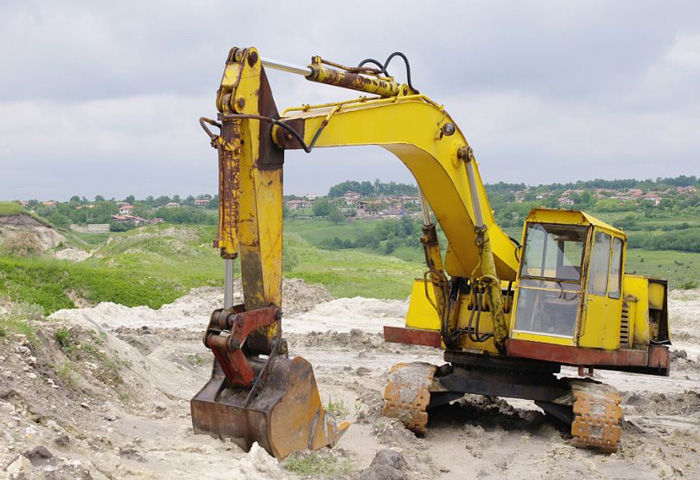
What Exactly is a Slewing Ring Bearing? A Simple Breakdown
At its core, a slewing ring bearing is a large-diameter rotational bearing designed to handle complex load combinations. Think of it as a sophisticated turntable. It’s a component that must support a massive structure, like the arm of an excavator or the blade assembly of a wind turbine, while allowing it to rotate smoothly.
The fundamental structure consists of two concentric rings: an inner ring and an outer ring. One ring is typically fixed to a stationary base, while the other attaches to the rotating part of the machinery. Between these two rings, housed within precisely engineered grooves called raceways, are the rolling elements. These can be either balls or cylindrical rollers. The movement between the inner and outer ring is what enables the rotational movement that is so essential for heavy equipment. Many models also feature an integrated gear on the inner or outer ring, which meshes with a pinion to drive the rotation.
How Do These Bearings Handle Such Heavy Loads?
The genius of a slewing ring lies in its ability to simultaneously manage various types of forces. Standard types of bearings are often designed to handle either radial loads (perpendicular to the axis of rotation) or axial loads (parallel to the axis). However, a slewing ring bearing is engineered to support all of these at once, in addition to significant moment loads—the tilting forces that try to pry the two rings apart.
This impressive load carrying capability is achieved through the design of the raceway and the arrangement of the rolling elements (balls or rollers). As a load is applied, the force is distributed across a large number of these elements, which then transmit it through the bearing structure to the machine’s foundation. This efficient load transmission prevents stress from concentrating in one area, which is critical for preventing deformation and failure. The design ensures a smooth and controlled rotation even under a heavy load, which is paramount for both the safety and performance of the equipment.
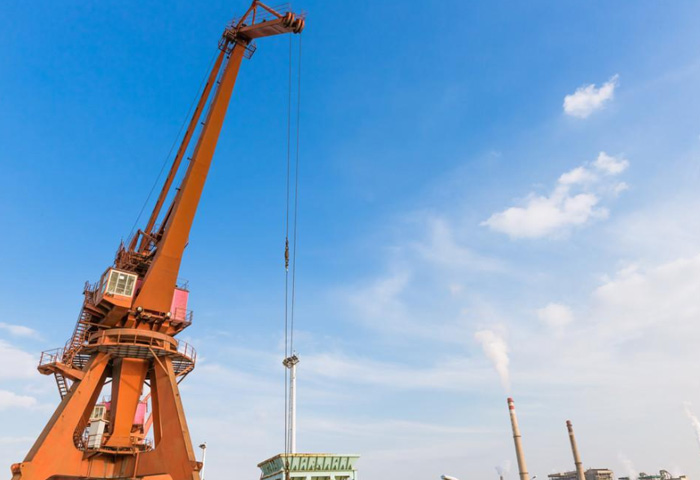
What Are the Core Types of Slewing Ring Bearings?
Not all slewing ring bearings are created equal. They are designed for different levels of load, precision, and application-specific needs. Understanding the main categories is the first step in making an informed choice. As a manufacturer, we produce a wide range, from lightweight ball bearing types to robust multi-row roller bearings.
Here is a simple breakdown of the most common types of slewing rings offer:
| Bearing Type | Rolling Element | Load Capacity | Key Characteristics | Common Applications |
|---|---|---|---|---|
| Single-Row Four-Point Contact Ball Bearing | Steel Balls | Moderate | Versatile, cost-effective, handles combined loads. The most common type. | Light-duty cranes, turntables, packaging machinery. |
| Double-Row Ball Bearing | Steel Balls | High | Higher axial load capacity than single-row. Good for applications with significant tilting moments. | Medium-duty cranes, wind turbine pitch/yaw systems. |
| Crossed Roller Bearing | Cylindrical Rollers | High | High rigidity and rotational accuracy due to rollers arranged at 90° angles. | High-precision rotary tables, robotics, medical scanners. |
| Three-Row Roller Bearing | Cylindrical Rollers | Very High | Ultimate load capacity. Three independent rows of rollers handle axial and radial loads separately. | Heavy-duty excavators, stacker-reclaimers, large ship-deck cranes. |
These core slewing ring bearings offer specific benefits tailored to different operational demands. The choice depends entirely on the forces your machinery will encounter.
Why is Proper Lubrication So Crucial for a Slewing Ring’s Service Life?
If there’s one piece of advice I give every customer, it’s this: do not neglect lubrication. A slewing ring bearing is a system of moving metal parts under immense pressure. Without a proper lubricant, the result is catastrophic failure. The primary goal of lubrication is to reduce friction between the rolling elements and the raceways.
Here’s why it’s so critical:
- Wear Prevention: A thin film of grease creates a barrier that prevents direct metal-to-metal contact, drastically reducing wear and extending the service life of the bearing.
- Corrosion Protection: The lubricant acts as a protective shield, sealing out moisture and other corrosive agents that can attack the precision-ground surfaces of the bearing.
- Heat Dissipation: While slewing bearings are typically low-speed, the friction they do generate creates heat. Grease helps to dissipate this heat away from critical contact zones.
- Contaminant Flushing: Regular re-lubrication helps to flush out small particles of wear debris or any contaminant that might have penetrated the seals, keeping the raceway clean.
Failing to follow a recommended lubrication schedule is the fastest way to increase maintenance costs and experience unplanned downtime. The small cost of grease and labor is an invaluable investment in the longevity of your slewing ring.
How Do You Select the Perfect Slewing Bearing for Your Machinery?
Choosing the right slewing ring bearing is a technical decision that directly impacts your equipment’s performance, safety, and longevity. For a procurement officer like Mark, this means looking beyond the price tag and digging into the specifications. As a manufacturer, I believe in transparency and helping our clients make the right choice.
Here are the key factors you must consider:
- Verify Load Capacity: This is non-negotiable. You need to know the maximum axial, radial, and moment loads your application will generate. Provide this data to your supplier to ensure the bearing is engineered to handle these forces with a sufficient safety factor.
- Material Certifications: The durability of a slewing ring starts with its raw materials. Insist on certifications for the steel used in the rings and rolling elements. Quality bearings designed for heavy use are typically made from quenched and tempered materials such as carbon steel (like 42CrMo or 50Mn).
- Dimensional Accuracy and Fitting: The bearing must fit perfectly onto its mounting structures. Pay close attention to tolerances for the inner and outer diameters, height, and bolt hole patterns. A poor fitting can cause internal load imbalances and premature failure.
- Gear Quality (If Applicable): If you need a toothed bearing, the gear’s quality is paramount. Inquire about the gear manufacturing process. Key factors include the tooth profile accuracy, surface hardness (often achieved through induction hardening), and backlash. A high-quality gear ensures smooth and efficient torque transfer.
- Sealing Effectiveness: The seals are the bearing’s first line of defense. Depending on the operating environment (e.g., dusty quarry vs. clean factory floor), you may need different sealing solutions. A durable polymer seal is essential for keeping lubricants in and contaminants out.
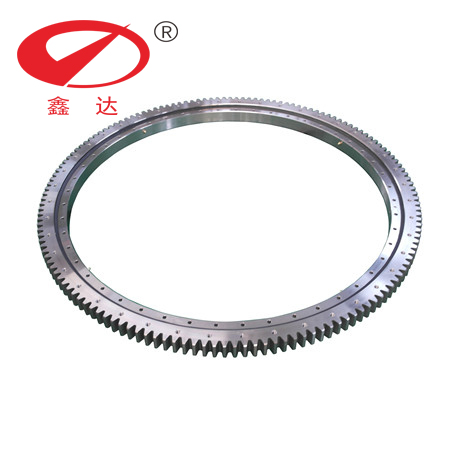
What are the Most Common Applications for these Ring Bearings?
The versatility of the slewing ring means it’s a cornerstone component across a vast range of industries and applications. Wherever heavy objects need to rotate, you will likely find one of these bearings at the heart of the mechanism. The ability to handle combined loads makes them indispensable.
"You can’t build a modern world without things that turn. From the crane that builds our cities to the wind turbine that powers them, the slewing ring bearing is the unsung hero that makes it all possible." – Fictional Senior Design Engineer
Here are some of the most common applications:
- Construction Equipment: This is the classic application. They are found in the turret of every excavator, the base of mobile cranes, concrete pumps, and aerial work platforms.
- Renewable Energy: Wind turbines use large ring bearings (often called pitch and yaw bearings) to adjust the angle of the blades and to orient the nacelle into the wind.
- Industrial Automation & Robotics: Precision-crossed roller bearings provide the rigid, zero-backlash rotational motion required for robotic arms and automated assembly lines.
- Medical Technology: High-precision, low friction slewing ring bearings are critical for the smooth and quiet rotation of CT and MRI scanning gantries.
- Port and Marine Machinery: Ship-to-shore cranes, deck cranes, and offshore mooring systems all rely on massive, corrosion-resistant slew ring models to handle immense loads in harsh environments.
- Defense Systems: Radar antennae, armored vehicle turrets, and weapon launch systems use ruggedized ring bearings for reliable positioning.
- Manufacturing: Applications are diverse, including bottling and filling machines, packaging machinery, and large rotary welding positioners.
How Does a Contaminant Threaten a Slew Ring?
A contaminant—be it dust, dirt, sand, metal shavings, or moisture—is the mortal enemy of a slewing ring bearing. These particles might seem small, but within the tight tolerances of a bearing, they act like abrasive sandpaper. When a contaminant gets past the seals and into the raceway, it mixes with the grease to form a destructive grinding paste.
This abrasive mixture rapidly wears down the mirror-smooth surfaces of the raceways and the rolling elements. This damage, known as brinelling or spalling, creates pits and imperfections. These imperfections disrupt the smooth rolling motion, leading to increased friction, vibration, and noise. Eventually, the damage becomes so severe that the bearing seizes or fails, causing unexpected and costly equipment downtime. This is why the integrity of the seal, often a specialized polymer lining, is just as important as the strength of the steel.
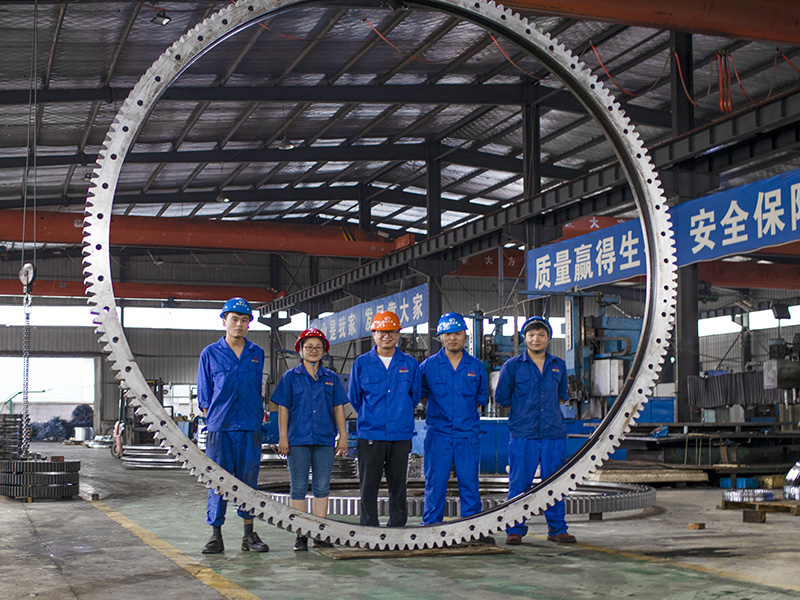
What’s the Big Deal with Gear Quality on a Toothed Slewing Ring?
For a toothed slewing ring, the integrated gear is not an afterthought; it is a fundamental part of the drive system. The quality of these gears on the outer ring (or inner ring) directly dictates the performance and reliability of the entire rotational mechanism. A poorly manufactured gear can be a source of constant problems.
First, poor gear geometry leads to inefficient power transfer. This means the drive motor has to work harder, consuming more energy and generating excess heat. Second, inaccurate tooth profiles cause improper meshing with the drive pinion, resulting in high levels of vibration and noise. This isn’t just an annoyance; it’s a sign of destructive forces at work. Over time, this poor engagement leads to rapid tooth wear, pitting, and even tooth breakage, which is a catastrophic failure. High-quality slewing ring bearings feature gears that are precision-cut and often surface-hardened to withstand the high contact stresses, ensuring a long and smooth service life. When you evaluate a potential bearing, always ask for the gear’s quality class and hardening specifications. For demanding roles, a precision double-row ball slewing ring with superior gear quality is essential.
Are Bearings Designed for Customization?
Absolutely. While there are many standard sizes, one of the greatest strengths of the slewing ring bearing is its design flexibility. At my factory, a significant portion of our work involves creating custom bearings designed specifically for a customer’s unique application. We understand that off-the-shelf solutions don’t always work.
Nearly every aspect of a slewing ring can be tailored:
- Dimensions: Inner and outer diameters, height, and ring cross-sections can be adjusted.
- Gear Configuration: We can provide an internal gear, external gear, or no gear at all. The tooth profile, module, and pressure angle can all be customized.
- Mounting Holes: Bolt hole patterns can be customized to match your existing mounting structure, which is crucial for retrofits.
- Sealing Systems: We can incorporate enhanced sealing solutions for extremely dusty, wet, or corrosive environments.
- Load Plugs: The location of the soft zone (marked by load plugs) can be positioned to ensure it’s away from the main load path in your application.
This ability to create a bespoke bearing ensures optimal performance and a perfect fitting, which can simplify the design of the surrounding machinery.
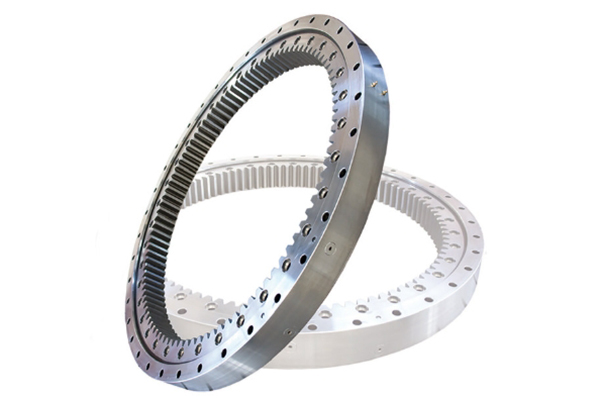
What Separates a Great Supplier from a Good One?
This is a question I know keeps people like Mark up at night. The world is full of suppliers, but finding a true partner is different. From my perspective as a factory owner who deals with international clients every day, the difference comes down to trust, communication, and a proven process.
A great supplier isn’t just a sales office; they are a manufacturing partner. For applications requiring extreme durability, like bucket-wheel excavators, a specialized roller slewing bearing from a reliable source is non-negotiable.
Here’s what to look for:
- Responsive & Technical Communication: Can you get a clear answer from an engineer, or are you stuck with a salesperson who doesn’t understand load capacity curves? A great supplier provides direct access to technical experts who can help you select the right bearing.
- Transparency and Honesty: They will provide you with material certifications without hesitation. They will give you realistic lead times and keep you updated on your order’s progress. They won’t make promises they can’t keep just to get the sale.
- Robust Quality Control: Ask about their QC process. Do they perform non-destructive testing on raw materials? Do they inspect raceway hardness and gear tooth profiles? Do they perform a final torque test before shipping? A commitment to quality should be evident in their processes.
- Proven Experience: Have they supplied ring bearings for your specific industry before? A supplier with experience in your field, whether it’s wind energy or robotics, will understand the unique challenges and standards required. As a High Quality Slewing Ring Bearings Supplier, we pride ourselves on a deep understanding of these diverse industrial needs.
Key Takeaways to Remember
Choosing and maintaining a slewing ring bearing is a critical task. Here are the most important points to carry with you:
- Understand the Loads: Always start with a clear understanding of the axial, radial, and moment loads your application will generate. This is the foundation of proper selection.
- Select the Right Type: Match the bearing type (ball, roller, single-row, multi-row) to your load and precision requirements. Don’t over-spec or under-spec.
- Prioritize Lubrication: A consistent and correct lubrication schedule is the single most important factor in achieving a long extended service life and avoiding costly downtime.
- Quality is More Than Price: Look beyond the initial cost. Evaluate the supplier’s commitment to quality materials, precision manufacturing, and transparent communication. A cheaper bearing that fails early is the most expensive one of all.
- Don’t Fear Customization: If a standard part isn’t a perfect fit, work with your supplier to design a custom slewing bearing. The long-term performance benefits often outweigh the initial design effort.





